OPC UA: Browse Node
The OPC UA: Browse Node allows you to browse node folders on your OPC UA Server. This node is only available in Edge Workflows.
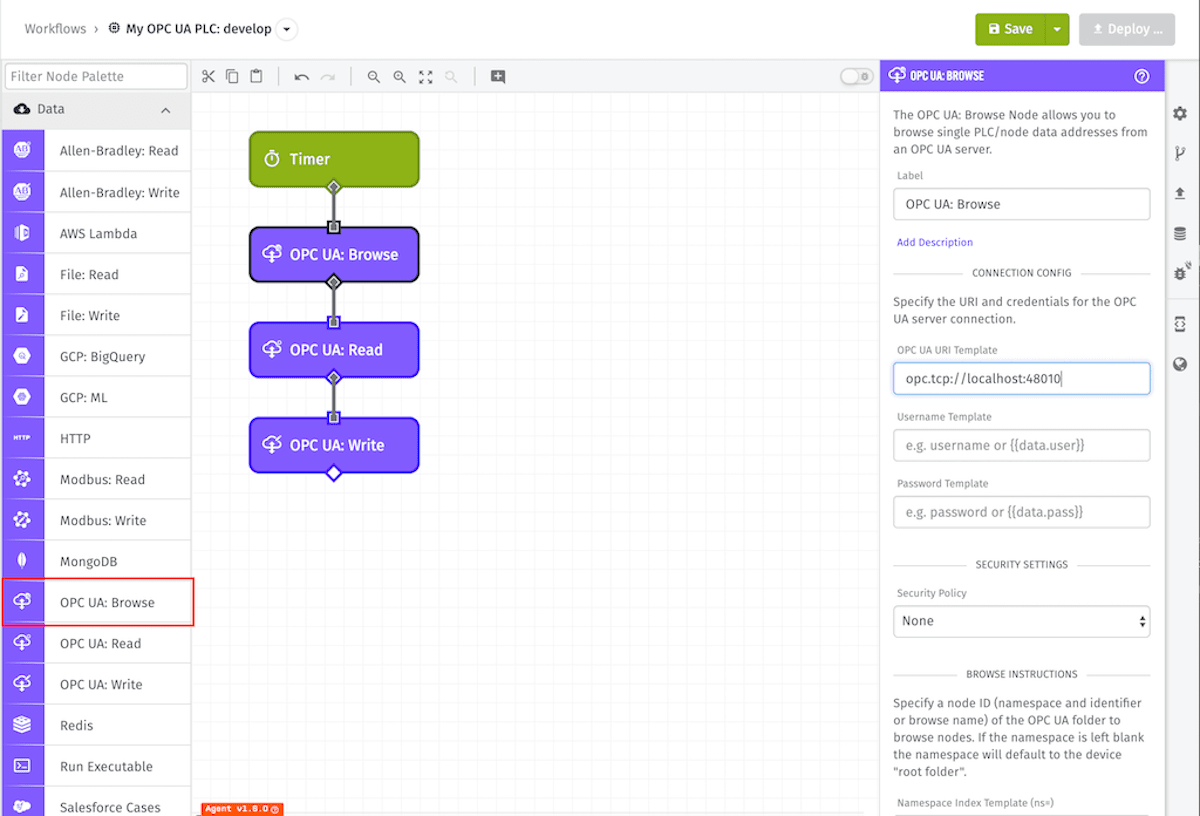
Node Properties
There are four main parts of the properties for this node ...
Connection Configuration
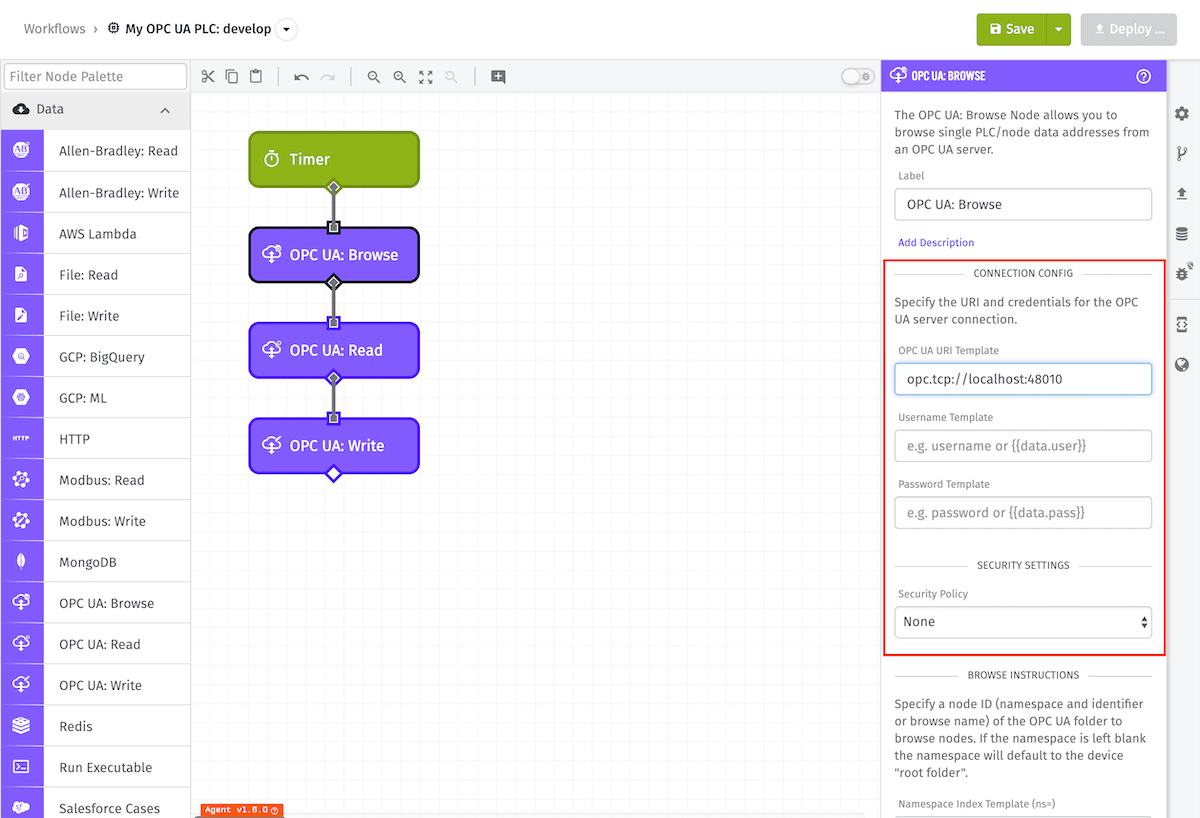
Connection Configuration contains:
- OPC UA URI (Required): A string template for the OPC UA server URI.
- Username (Optional): A string template for login username.
- Password (Optional): A string template for login password.
Security Settings
You can optionally select a SSL/TLS Security Policy for the connection to the OPC UA server through the dropdown selector. Security Policy options include:
- None
- Basic-128
- Basic-128 RSA-15
- Basic-192
- Basic-192 RSA-15
- Basic-256
- Basic-256 SHA-256
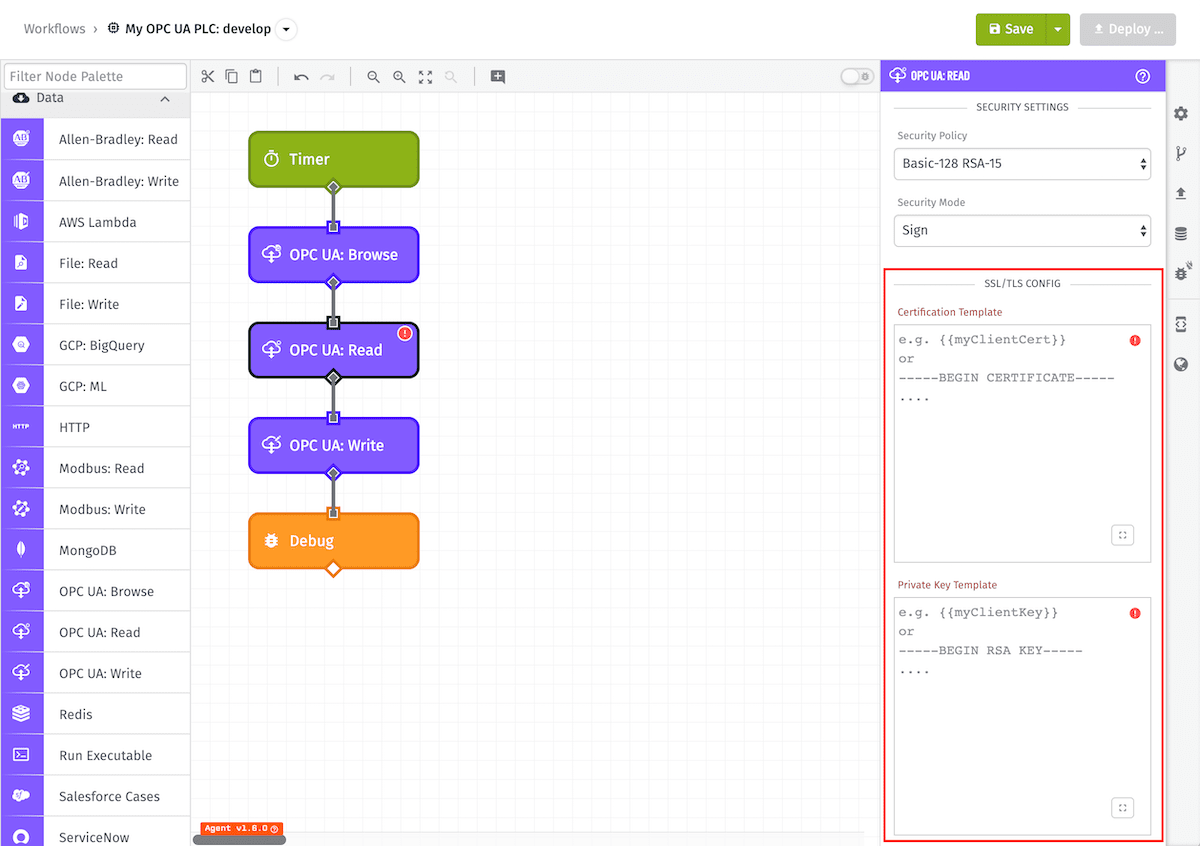
If a Security Policy is selected, you will have the option to select between "Sign" or "Sign and Encrypt" security modes. You'll then be required to provide a valid SSL/TLS client certificate and private key.
Browse Instructions
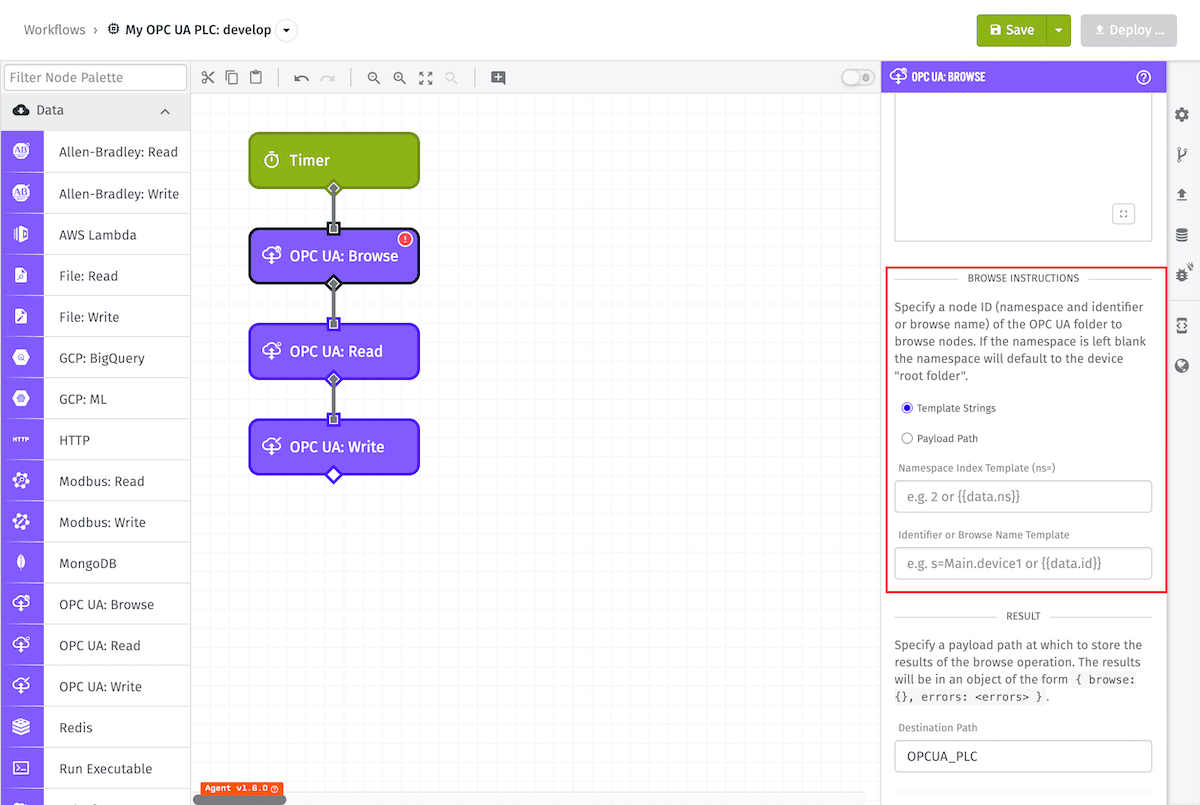
Browse Instructions can be specified in one of two ways. At least one is required, but both can't be specified at the same time.
-
Template Strings: For the Browse Instruction, fill out the following input configuration fields, all of which can utilize templates:
- Namespace Index (ns) (Optional): A string template or positive integer.
- Identifier or Browse Name (Optional): A string template or string for the node identifier or browse name. If the Namespace is left blank and this is a valid node browse name, the path will be resolved. If an identifier, the string should begin with one of the following types:
- i=: for unsigned integer (UINT).
- s=: for string.
- g=: for global unique identifier (GUID).
- b=: for byte string.
-
Payload Path: (edge version 1.18.0 and above) Enter a payload path that resolves to an array of Browse Instructions to be run on this node. The following are the object properties for successful attempts:
- nameSpace: (Optional) A string or positive integer.
- identifier: (Optional) A string for the node identifier or browse name. If the nameSpace is left blank and this is a valid node browse name, the path will be resolved. If an identifier, the string should begin with one of the following types:
- i=: for unsigned integer (UINT).
- s=: for string.
- g=: for global unique identifier (GUID).
- b=: for byte string.
The following is an example of an object that you could pass in:
{
"nameSpace": 3,
"identifier": "g=d6fe7561-65c5-4237-b31a-49b88a055d4c"
}
If the Namespace and Identifier are left blank or are not included in the Payload Path object the Browse Instructions will default to the "root folder".
Destination Path
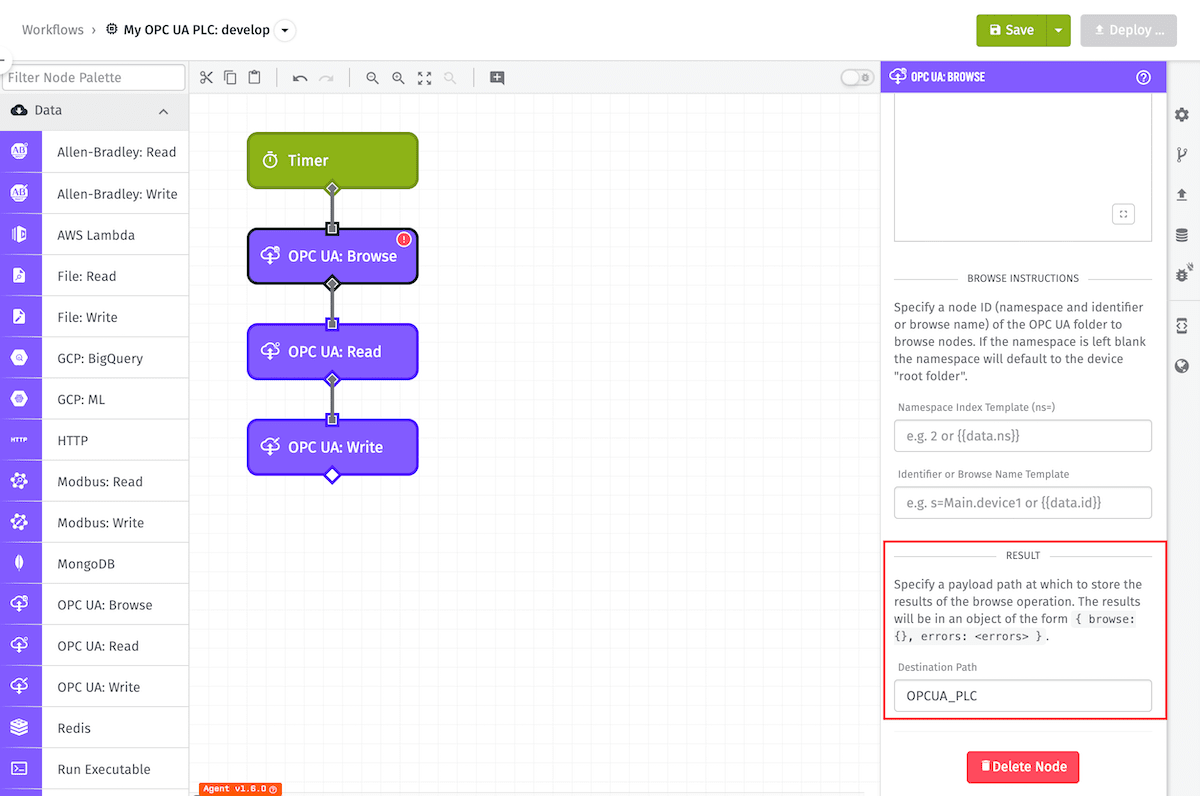
The results of the browse instruction will be placed in an object with the name of the folder at the Destination Path (a payload path).
Result
The following is an example of a successful browse of the "root folder", where the Destination Path is OPCUA_PLC:
{
"OPCUA_PLC": {
"RootFolder": [
{
"nodeClass": "Object (1)",
"isForward": true,
"namespaceUri": "http://opcfoundation.org/UA/",
"identifierType": "Numeric",
"identifier": 85,
"namespace": 0,
"nodeId": "ns=0;i=85",
"displayName": "locale=null text=Objects",
"browseName": "Objects"
},
{ ... },
{ ... }
]
}
}
Node Errors
The following is an example of a failure to browse, and the destination path is OPCUA_PLC:
{
"OPCUA_PLC": {
"errors": [
{
"type": "OPC-UA_BROWSE_ERROR",
"message": "Something useful to help you fix the issue."
}
]
}
}
Was this page helpful?
Still looking for help? You can also search the Losant Forums or submit your question there.